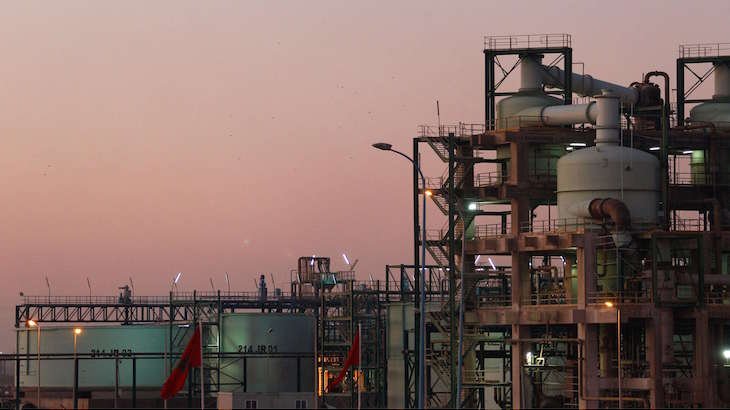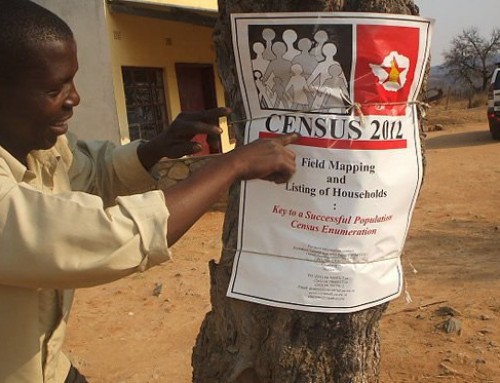The Marketing 5C’s Analysis is useful when analysing the macro and microenvironment of a company.
Office Chérifien des Phosphates is an example of a state-owned company. Many people assume that state-owned companies do not need to analyse their environment.
There is a need to constantly scan all environments, to ensure that a company meets its objectives at all times.
The 5c’s of marketing are a commonly-used situation analysis technique used to help marketers make informed business decisions. The “5 C’s” stand for Company, Customers, Competitors, Collaborators, and Climate. In a nutshell, a 5c analysis will help you evaluate the most important factors facing your business
Volusion
In this article, we analyse Office Chérifien des Phosphates to determine its situation in relation to its operating environment.
We start with analysing the ‘Company’. In this section, ask questions related to the business and its operations.
Company
What does the company sell?
Office Chérifien des Phosphates sells phosphate rock, phosphoric acid, phosphate fertilizer, phosphate, and other phosphate-based products.
We have to consider whether or not there are substitutes for phosphate now and in the future.
The substitutes for phosphate are manure, which is not applicable on a large scale. Customers are also considering recycling phosphate from human sewerage among other sources.
It is safe to say, there are no threats from substitutes at the moment. As a result, there is no need to invest in developing the product.
Do our products vary from that of competitors?
The three biggest producers of phosphate rock ore are China, the USA and Morocco.
Morocco has high-grade phosphate rock with an average of 28% P2O5. The next best ore is in the USA with a density of 23% P2O5. China has the lowest grade ore on average with a density of 12% P2O5
In the near future, there are no products of better quality. The new deposits from marine phosphate mining are not of the same quality.
Office Chérifien des Phosphates has an advantage when it comes to product quality versus the market.
What competitive advantage does my company have?
Office Chérifien des Phosphates has access to 70% of the world’s phosphate rock reserves. As a result, it dictates supply and price on the global market. In the future, the competitive advantage shall grow as phosphate rock reserves deplete.
There is vertical integration which allows the company to process some of the phosphate rock. The result is higher margins as processed materials like fertilizer have higher profit margins than the rock.
There are no substitutes for phosphorus, and there never will be. Close substitutes like manure, are not available on a large scale.
The combination of advantages enjoyed by Office Chérifien des Phosphates means no company can compete with it. As a result, there is no need to invest in improving the organisation.
What makes OCPs brand unique or memorable?
The only differentiating factor is the high-grade ore coming out of Morocco.
Other companies process and deliver the final products to the various markets ranging from agriculture to food industries.
Office Chérifien des Phosphates (OCP) should look into creating more subsidiaries that market fertilizers and phosphate-based products. This enables the organisation to gain more control in the market and more profits.
What does OCP do better than others?
Bigger resources lead to more reserve stockpiles. The stockpiles enable Office Chérifien des Phosphates to be a more reliable supplier of phosphate rock than competitors.
Countries like China, owing to limited stockpiles and increasing demand internally, limit their exports using higher tariffs.
The more demand increases internally for China and the USA, where populations are booming, the more important phosphate rock from Morocco will become on the global market.
By 2030, Office Chérifien des Phosphates (OCP) will control 80% – 90% of the global market owing to their stockpiles. In 2030, OCP will be able to control the pricing of phosphorus.
Morocco has already invested in phosphate rock mining, unlike other new players who are still pouring money into their own mining projects. As a result, OCP has a price advantage going into the future as it already benefits from economies of scale.
For an Arab country, Morocco does not suffer from as much political turmoil as other phosphate-producing countries like Saudi Arabia. A good example is in the Arab Spring where Moroccan production was not as affected as in other Arab countries. Better political stability makes OCP a more reliable supplier of phosphorus than some of its competitors.
Other Arab countries like Syria have seen sanctions imposed on them by consumer countries as a result of political turmoil.
What does my business do worse than others?
Some consumers place obstacles that make it harder for OCP to trade. OCP does not have control over the markets it trades in, unlike its competitors.
The USA imposed an 18% tariff on phosphate from Morocco. The move came as a result of competitor Mosaic putting pressure on the government.
0wing to the phosphate reserves Office Chérifien des Phosphates has, it can afford to play the waiting game with the USA.
Morrocan phosphate is high in cadmium, which causes soil contamination.
Reducing cadmium in phosphate increases product prices. OCP does not have to bow down to these demands as it has most of the phosphate reserves.
Poor water supply in Morocco affects production at the mines. The need to use desalination plants increases the price of phosphate rock. The price inelasticity of demand means that customers still have to buy phosphate rock from OCP.
There is a risk of operations being affected by the conflict between Morocco and Western Sahara over a contested zone in which there are phosphate rock reserves. Office Chérifien des Phosphates uses some of the proceeds from mining for the welfare of people in Western Sahara keeping relations stable.
China pursues oligopolization of the phosphate industry. The potential result is economies of scale as smaller companies go under the wing of larger operators. China will be able to compete better on price on the global market. However, China needs most of the phosphate for its own consumption, so price wars with China are not a possibility.
In the past, worker relations problems in the MENA region have seen production decreasing by 40% as workers block the transport of ore from the mines. If OCP does not satisfy workers, disruption of distribution is possible in the future.
How do customers view my business?
Consumers view Office Chérifien des Phosphates as a monopoly that needs regulation. OCP has most of the phosphate reserves, so consumers cannot act against it at the moment.
Some countries think that OCP will increase prices in the future, starting in the year 2030. In the meantime, they try to control Morocco or find substitutes for phosphorus.
None of the tactics mentioned above is likely to bear fruit, so OCP is safe at the moment.
If OCP suddenly gained money to invest, where would it invest it?
Improving water desalination techniques for OCP is important. In the MENA region, water scarcity is a problem owing to drought and population increases among others. Ensuring an adequate water supply reduces the chances of production disruptions.
Investing in infrastructure for use in the decadmiation of phosphate rocks is a priority. Providing less toxic rock is a nice touch for our consumers.
The Global Phosphorus Research Initiative has calculated that peak phosphorus mining will be attained around the year 2033. After that production will decrease until reserves are depleted around the year 2133. It is imperative that OCP starts exploring for other phosphate reserves. A good place to start looking is in the oceans like competitors are doing in Namibia, New Zealand and other areas.
During the course of mining, processing, and use, considerable amounts of phosphate are lost. OCP should invest in technology that reduces wastage of phosphate, increasing profits.
If Office Chérifien des Phosphates suddenly had to cut its budget by 10%, where would it make those cuts?
It is hard to find any section where budget cuts can be made. Everything from the desalination plants to the welfare of those in Western Sahara is a necessity.
The remuneration of employees is the only area where a budget cut can be applied. However, there are ramifications for such actions, like workers downing tools.
With the current employment situation in Morocco, workers do not have the ability to down tools for long. Thus a wage cut is an area that OCP can look to for cost reduction.
What are the 1, 3, and 5-year goals for OCP?
The 1-year goal for OCP is to reduce operating costs for the US market. Reducing costs assists in being able to continue to operate in the US market after an 18% tariff on phosphate imports from Morocco.
OCP announced in 2010 that it expects to double its production capacities from 28 to 55 MMT and triple its production of fertilizers from 36 to 100 MMT. A key component of OPC’s growth strategy is the creation of a fertilizer, phosphate, and sulfur terminal in the port of Jorf Lasfar, which should be completed by 2022
A 3-year goal is to improve the desalinisation plant to guarantee water supply for OCP operations.
In 5 years, OCP should have improved production processes to reduce wastage of phosphate by 50%.
Collaborators
These are the companies that OCP works with in order for operations to flow smoothly.
Who runs the daily operations of the company?
Mostafa Terrab runs the company. He is also the president of the International Fertilizer Organisation.
As a result, OCP has influence on the global fertilizer community. It’s position is secure because of Mostafa.
Does Office Chérifien des Phosphates have a partner that helps run the company?
The organisation is run solely by the government of Morocco.
Does OCP have investors or stakeholders?
The Moroccan government owns 95% of the shares.
Who creates or supplies the products that the company sells?
OCP is vertically integrated. The company mines phosphate rock and produces phosphoric acids and phosphate fertilizer.
There is no need to rely on anyone else to the extent of the supplier having bargaining power over OCP.
Who is OCP’s shipping provider?
Open Sky Logistics and Universal Freight Services are the top shipping providers.
Contracts between the two firms are allocated on the basis of merit, which helps in maintaining healthy competition.
There is no need to make a change in terms of shipping providers.
Who processes payments?
Attijariwafa National Bank is where payments are processed. From there monetary flows are monitored by the state.
There is not much flexibility in terms of banking options. As a result, there is no opportunity to improve banking operations.
Who provides Office Chérifien des Phosphate’s ecommerce platform?
There is no eCommerce platform as all of the customers are institutional. There are no advantages to be gained from having an eCommerce platform.
Who handles inventory or warehouse operations?
Inventory and warehousing are handled onsite at the mines.
There are no plans to change the arrangement as proximity is key in maintaining Morocco’s phosphate stockpile.
Who is OCP’s domain registered with?
The website details are hidden by Cloudflare.
There is no reason to delve deeper into the matter. The main issue is to use the website to improve OCP’s public relations as stakeholders have misgivings about OCP.
Who is doing marketing or advertising for Office Chérifien des Phosphate?
OCP has many different partners for various markets.
For example, in Romania, OCP partnered with the Al Dahra Group from the UAE.
The two firms operate in Romania as SEEFCO.
The idea is to analyse all of the partners in terms of their ability to deliver on contracts. In the case that a potential partner is found wanting, reevaluate the arrangement.
Does OCP have someone running its social media accounts?
SocialSEO is the company that is responsible for handling social media for OCP.
The company is not doing that well as the social media pages are not very prominent.
OCP must look into hiring a more competant social media partner.
The political nature of the industry means that it is key for OCP to have a good standing in the media.
Who are the freelancers and contractors that work with OCP?
OCP employs a lot of contractors to handle canteen, transport and other issues.
Most contracting is under sections that do not have a large bearing on the fortunes of the organisation.
Contractors are not a concern at the moment.
Customers
It is important to know our customers inside and out. When you know your customers, you know what drives them.
The result is targeted marketing messages with high yields. Another advantage is higher sales as customers resonate with the product.
Below are the questions considered under this section.
Who is the ideal customer for Office Chérifien des Phosphates?
OCP deals with big fertilizer organisations, food manufacturing companies, and other concerns that use the phosphate family of products.
Big fertilizer organisations include the likes of Agrium and The Mosaic Corporation.
OCP also deals with institutions such as ministries of agriculture.
There are no plans to deal with smaller customers owing to the scale of OCP’s operations.
Who is the target audience?
The company is interested in major corporations, institutions and governments.
At the present moment, OCP has their attention and has no need to make overtures owing to its position.
The current customers
OCP has 160 customers on 5 continents.
There is no need to increase or decrease the number of customers. The idea at the moment is to control the supply of phosphate, to maintain the price level.
What sorts of products are sold most/least frequently?
Phosphate rock, phosphoric acid, phosphate fertilizer, and other phosphate-based products.
There is no need to develop other products as the costs of research are too high.
What are the general reviews about the products?
Moroccan phosphate is high in cadmium. The cadmium makes the phosphate more toxic than phosphate from elsewhere.
Reviews on the aspect are usually negative.
The negative reviews are not a problem, as consumers have limited alternatives.
How customers behave on the website?
Office Chérifien des Phosphates receives approximately 92000 visitors per month.
The visitors spend on average 3 minutes on the website, visiting 4 pages at a time.
28.64% of the website visitors exit the website after only viewing one page
93% of the visitors to the site, are from Morocco.
There is a need to have visitors to the page, from other parts of the globe.
The reason is to spread a more positive message about OCP, to stakeholders. To this end, OCP’s marketing company needs to strategise along those lines.
How are customers finding OCP’s website?
51.93% of customers are finding the website directly. Finding the site directly means entering the website name directly into the browser.
16.72% of the traffic comes from other websites.
22.87% of the traffic arrives at the website via searches on the internet.
4.32% of the traffic arrives at the website from social media pages like Twitter.
The performance of the website is not great. As stated earlier, another social media company should be engaged to improve the presence of OCP online.
Is Office Chérifien des Phosphates’ audience growing or shrinking?
Traffic to the website is steady at around 92000 t0 100000 visits per month.
OCP’s global audience continues to grow as demand for fertilizer increases. Population growth has led to an increase in the demand for food.
As a result, OCP continuously increases the output of phosphate. Currently, the output is 100 metric tonnes per year.
It is important to balance sales with maintaining phosphate reserves and price.
As a result, OCP is not striving to meet all of the demand that is in the market. OCP plays the waiting game in the meantime.
How many repeat purchases do customers make? How important are repeat purchases to the business model?
Customers need phosphate, there are no substitutes.
There is no need to worry about how frequently they purchase. Sales will always be made to customers.
Is there seasonality or trends in customer purchases?
There is no seasonality, as customers live on all continents.
There is no need to plan operations around seasons.
Do customers do careful research before purchasing, or do they impulse buy?
Customers conduct research on items such as cadmium and phosphate density among other aspects.
Regardless of their research, customers still have to purchase from OCP.
What is required by the customers is for OCP to use their research to customise the fertilizers to their markets.
What motivates OCP customers to purchase?
Customers purchase as they need to feed their people.
There is high price tolerance in the market, as there is no other option.
The main objective is to secure the supply of phosphate for their nations.
Where do customers go to get more information about OCP’s products?
Office Chérifien des Phosphates has a network of distributors that assists with the marketing of the products.
it is from the distributors where customers get information about the products. The current structure is effective with distributors in the different regions catering to the customers’ unique needs.
How to customers communicate with the company?
The distributors are responsible for all communication.
There is no need to adjust the arrangement as it is the most cost-effective approach.
What sources of customer feedback does OCP have available?
The distributors handle the customer feedback.
What is the most common customer complaint or issue?
The lack of security when it comes to the supply of phosphate is a major concern for customers.
Some customers are of the opinion that OCP limits supply to manipulate the price of phosphate.
Customers cannot do anything about the situation. OCP continues to follow its strategy concerning the distribution levels of phosphate.
What is the most common praise or positive feedback?
Customers do not say anything positive about us.
The desires of the market clash with OCP’s strategy.
As a result, it is best to follow OCP’s chosen path, as opposed to bending to customer demands.
What sorts of things do the customers find most interesting?
Customers have their eyes on the situation in Western Sahara.
The conflict is a potential avenue through which the West can gain access to phosphate on their terms.
Any conflict between Morocco and Western Sahara will see The West backing Western Sahara.
There is not much OCP can do about the situation.
The best approach is to continue providing financial support to the people of Western Sahara.
The main objective of this strategy is to reduce the chances of a conflict.
If OCP could only tell its customers one thing about the business, what would it be?
One of the main issues OCP is facing with its customers is environmental concerns.
The toxic nature of Morrocan phosphate is forcing some customers to research ways to use less phosphate. An example is the reclamation of phosphate from sewerage.
The threat is still minimal, but advances in technology may lead to a situation where customers have an alternative to Morrocan phosphate.
OCP should keep customers from making such considerations.
A good campaign on how OCP is making its product more environmentally friendly reduces the motivation of customers from using fewer phosphate products.
Competitors
Let us take a look at who the competitors are, and if they pose a threat to Office Chérifien des Phosphates.
In the case that any of the competitors are a threat, plans are made to counter the threat.
OCP’s direct competitors are Iraq, China, Algeria, Syria, Jordan, South Africa, the US and Russia.
Major competitor firms include US company Mosaic, Russian-owned PhosAgro and the Chinese Yuntianhua Group.
None of the firms or countries above is a major threat to OCP. The reason is that 70% of phosphate reserves are in Morroco.
At some point, OCP will control the global phosphate market. There is no reason to formulate battle plans as far as the competition is concerned.
Which are new or emerging competitors?
High phosphate prices have resulted in some companies and nations conducting explorations to find alternative phosphate reserves.
Exploration has been done in Saudi Arabia, and offshore in New Zealand and Namibia.
Nothing has come of these activities.
At this point, OCP can just observe as competitor activities have not borne fruit.
Other competitors like USA and China now import more phosphate than they export.
The effect is reducing the level of competition on the global market for OCP.
USA and China now import more than they export because of growing populations.
The result is that they need more of the phosphate for their own consumption, rather than to sell it.
More consumption means more competition for phosphate, which increases the price. A higher price is good for OCP.
What do competitors offer that OCP does not?
The USA offers phosphate that has a lower level of cadmium.
There are less chances of supply disruption from the USA, as there are no internal conflicts such as the potential conflict between Morocco and Western Sahara.
However, the USA is not selling a lot of it’s phosphate as a result of demand back home.
As a result, the USA is not a threat to OCP’s dominance of the phosphate market.
What are each of OCP’s competitors’ biggest strengths?
The only field in which competitors have an edge over OCP is research.
Competitors in Europe are concentrating on reusing phosphate by extracting it from sewerage, water and other sources.
The method is not a threat to Office Chérifien des Phosphates at this point.
There is no need to invest in defending the company from the competition.
What are each of OCP’s competitors’ biggest weaknesses?
The main issue with the competitors is access to phosphate reserves.
A look at the charts below shows how OCP continues to gain an advantage going into the future.
The source of the advantage is OCP’s access to 70% of the world’s phosphate reserves.
OCP can play the waiting game with the competitors, as world domination of the market will be achieved by the year 2100.
As phosphate resources deplete around the world, the competition will dwindle without OCP making an effort.
What strategies are my competitors using to gain customers?
Phosphate has no substitutes.
Products like manure cannot get the job done on a large scale.
The competition cannot take customers from OCP.
There is no need for counter-strategies.
Is there anything that my competitors are doing that I cannot?
Within the realm of phosphate rock mining, the competition cannot do anything that OCP cannot do.
All activities from exploring new reserves to vertical integration are within the capabilities of OCP.
OCP is not in danger of the competition gaining a competitive advantage. There is no need to make any plans in that regard.
Is there anything that Office Chérifien des Phosphates can do that the competitors cannot?
OCP has the ability to reduce global phosphate rock prices by flooding the market.
The result is the competition becomes less profitable.
OCP has larger profit margins than the competition as its reserves are mined at a smaller cost.
In the short term, OCP can use price to strangle the competition.
Climate
In this section, OCP keeps track of events in the macroenvironment and the microenvironment.
The purpose of the exercise is to reduce the impact of threats and to take advantage of opportunities in the environment.
Are there any new or proposed laws or regulations that may affect OCP? If so, how does OCP plan to address them?
Eutrophication is a major issue around the globe.
A lot of governments are pushing for policies that address the issue of eutrophication.
At this point, no moves have been made that can affect OCP. The reason is that fertilizer is needed to keep up with world demand for food.
To date, policies meant to deal with eutrophication include:
– Environmental education programs in schools
– Public awareness campaigns
– Public access to environmental information
– Technical assistance/targeted outreach and education
As you can see, such policies are not an immediate threat to Office Chérifien des Phosphates.
There is no need to worry about current policies meant to address eutrophication.
Europe introduced initiatives to reduce its reliance on phosphate rock.
The image above shows initiatives such as changing diets, food chain efficiency, and agricultural efficiency among other endeavours.
Their hope is to reduce the price of phosphate rock, by reducing the demand.
OCP’s research shows that there is minimal threat of such initiatives working in the long term.
In addition to the initiatives not being effective, it will take a lot for a lot of countries outside Europe to become involved.
Countries like Saudi Arabia and Finland have invested in their own phosphate mining operations.
The cost of the operations runs into billions before any meaningful progress is made.
The potential reserves also are not big enough to threaten Morocco’s position on a global scale.
However, OCP will keep its eyes on the operations of potential competitors.
Are there any new or emerging technologies that may change the way OCP’s customers act or the way the business operates?
There is nothing major going on in the sector. There is no need to be worried at this point.
What sorts of things or opinions are becoming popular or unpopular?
Most of the issues have been touched on above. To recap:
– Eutrophication
– Cadmium poisoning from phosphate rock
– Morrocan conflict with Western Sahara
– Wastages occurring along various stages in the phosphate marketing, processing and distribution process
In addition, state intervention and protectionism. The international system is in transition to one in which state-capitalist tendencies are more prominent. In the mineral sector, this is resulting in increased access restrictions, trade barriers, export quotas, and other manifestations of growing protectionism and resource nationalism.
OCP is already under such a situation and is flourishing.
Competitors in countries such as China are now experiencing protectionism. China is increasing tariffs on phosphate exports, to prevent phosphate from exiting its borders.
The result is less competition for OCP in the global phosphate market.
The European Union and other Western powers are actively trying to gain access to resources using diplomatic strategies.
An idea Europe has toyed with is bartering their technical expertise on mining, to gain access to Morocco’s phosphate reserves.
It is OCP’s hope that the Moroccan government, does not fall for such a trap.
There is nothing that Office Chérifien des Phosphates can do, but watch as the events unfold.
If Western powers succeed in such an endeavour, OCP might find itself in a tricky situation.
Conclusion
The 5 C’s Analysis of Office Chérifien des Phosphates shows that OCP is in a strong position in most elements.
The company is in a strong position as far as the product it sells is concerned. 70% of the world’s phosphate rock reserves are in Morocco.
OCP is under government control. The situation limits OCP in terms of strategic flexibility. Competitors might be able to make better moves in the market as a result.
Customers are available worldwide, and they do not have substitutes for OCP’s products. As a result, OCP can dictate terms putting itself in a favourable position.
The competition is not in a position to create problems for OCP. The biggest competitors in the USA, and China, are being influenced by their governments making them less of a threat on the global scene. Demand for phosphate is growing in the USA and China. As a result, competitors are selling more of their products in their nations, and not on the global market.
Stakeholders are trying to come up with policies to reduce their dependence on Morrocan phosphate rock. The current strategies do not have an impact on OCP’s prospects for the future.
To conclude, OCP is in a very strong position going into the next century.








Leave A Comment